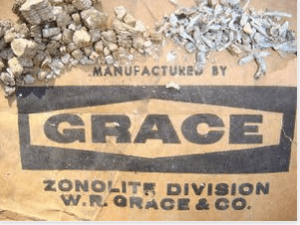Montana Takes Charge of Libby Asbestos Site
A new five-member advisory team, appointed by the Montana Legislature earlier this year, has now assumed oversight of the Libby asbestos site, intent on focusing on keeping current residents safe over the long term.

“The advisory team of state and local officials and one citizen selected by Montana Gov. Steve Bullock will work with environmental agencies to come up with ways to prevent further exposure to asbestos that remains beneath the soil and in the walls of many houses in the small towns of Libby and Troy,” reported the Associated Press.
In the meantime, the work the EPA has been doing for nearly two decades – which included removing more than a million cubic yards of dirt from more than 2,500 properties in the small town – is expected to be complete by summer 2018, officials of the agency report.
Indeed, the Libby site has been a priority for quite some time, appearing on the list of Superfund sites, which include the most severe environmental problem areas in the country.
Many call the Libby situation the worst environmental disaster in U.S. history, often equated with the Love Canal, New York disaster of the 1970s.
The EPA spent nearly $600 million for the clean-up.
Nonetheless, as the EPA pulls out, state and local agencies will begin to take more responsibility for clean-up of any lingering issues, hence the formation of the advisory team.
If more asbestos issues arise after the EPA is gone – such as discovery of vermiculite during a home renovation – the advisory team will have to figure out on its own how to handle the situation.
To help facilitate the transition, they’ve chosen to hire a Superfund “liaison” to smooth the way. Also, the city will still have funds available from the EPA and from the state to address problems that arise.
Since the W.R. Grace mine was shuttered in 1990, some 400 individuals have died as a result of asbestos exposure from the mine and an estimated 3,000 have been sickened due to the asbestos-tainted vermiculite, which was found not only at the mine but was used all around the town and surrounding areas.
For example, the mine used to distribute leftover asbestos tailings, which were used in private yards, in public playgrounds, and for all sorts of other purposes.
That meant that Libby-ites of all ages were exposed to the hazardous material, which can cause mesothelioma and other lung-related cancers and diseases.
So far, however, there isn’t a clean-up plan for the mine site itself and for surrounding areas of the beautiful Kootenai National Forest, which includes both public and private land.
Those plans should begin to be discussed shortly.
